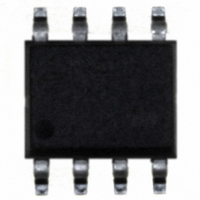ISL83490IBZ Intersil, ISL83490IBZ Datasheet - Page 10

ISL83490IBZ
Manufacturer Part Number
ISL83490IBZ
Description
TXRX RS-485/422 3.3V LP 8-SOIC
Manufacturer
Intersil
Type
Transceiverr
Datasheet
1.ISL83483IBZ-T.pdf
(17 pages)
Specifications of ISL83490IBZ
Number Of Drivers/receivers
1/1
Protocol
RS422, RS485
Voltage - Supply
3 V ~ 3.6 V
Mounting Type
Surface Mount
Package / Case
8-SOIC (3.9mm Width)
Lead Free Status / RoHS Status
Lead free / RoHS Compliant
Available stocks
Company
Part Number
Manufacturer
Quantity
Price
Company:
Part Number:
ISL83490IBZ
Manufacturer:
Intersil
Quantity:
686
Part Number:
ISL83490IBZ
Manufacturer:
INTERSIL
Quantity:
20 000
Part Number:
ISL83490IBZ-T
Manufacturer:
INTERSIL
Quantity:
20 000
Application Information
RS-485 and RS-422 are differential (balanced) data
transmission standards for use in long haul or noisy
environments. RS-422 is a subset of RS-485, so RS-485
transceivers are also RS-422 compliant. RS-422 is a point-
to-multipoint (multidrop) standard, which allows only one
driver and up to 10 (assuming one unit load devices)
receivers on each bus. RS-485 is a true multipoint standard,
which allows up to 32 one unit load devices (any
combination of drivers and receivers) on each bus. To allow
for multipoint operation, the RS-485 spec requires that
drivers must handle bus contention without sustaining any
damage.
Another important advantage of RS-485 is the extended
common mode range (CMR), which specifies that the driver
outputs and receiver inputs withstand signals that range from
+12V to -7V. RS-422 and RS-485 are intended for runs as
long as 4000’, so the wide CMR is necessary to handle
ground potential differences, as well as voltages induced in
the cable by external fields.
Receiver Features
These devices utilize a differential input receiver for maximum
noise immunity and common mode rejection. Input sensitivity
is ±200mV, as required by the RS422 and RS-485
specifications.
Receiver input impedance surpasses the RS-422 spec of
4kΩ, and meets the RS-485 “Unit Load” requirement of 12kΩ
minimum.
Receiver inputs function with common mode voltages as
great as +9V/-7V outside the power supplies (i.e., +12V and
-7V), making them ideal for long networks where induced
voltages are a realistic concern.
All the receivers include a “fail-safe if open” function that
guarantees a high level receiver output if the receiver inputs
are unconnected (floating).
Receivers easily meet the data rates supported by the
corresponding driver.
ISL83483, ISL83485, ISL83491 receiver outputs are tri-
statable via the active low RE input.
Driver Features
The RS-485, RS-422 driver is a differential output device that
delivers at least 1.5V across a 54Ω load (RS-485), and at
least 2V across a 100Ω load (RS-422) even with V
The drivers feature low propagation delay skew to maximize
bit width, and to minimize EMI.
Drivers of the ISL83483, ISL83485, ISL83491 are tri-statable
via the active high DE input.
ISL83483/88 driver outputs are slew rate limited to minimize
EMI, and to minimize reflections in unterminated or
improperly terminated networks. Data rate on these slew
10
ISL83483, ISL83485, ISL83488, ISL83490, ISL83491
CC
= 3V.
rate limited versions is a maximum of 250kbps. Outputs of
ISL83485, ISL83490, ISL83491 drivers are not limited, so
faster output transition times allow data rates of at least
10Mbps.
Data Rate, Cables, and Terminations
RS-485, RS-422 are intended for network lengths up to
4000’, but the maximum system data rate decreases as the
transmission length increases. Devices operating at 10Mbps
are limited to lengths of a few hundred feet, while the
250kbps versions can operate at full data rates with lengths
in excess of 1000’.
Twisted pair is the cable of choice for RS-485, RS-422
networks. Twisted pair cables tend to pick up noise and other
electromagnetically induced voltages as common mode
signals, which are effectively rejected by the differential
receivers in these ICs.
Proper termination is imperative, when using the 10Mbps
devices, to minimize reflections. Short networks using the
250kbps versions need not be terminated, but, terminations
are recommended unless power dissipation is an overriding
concern.
In point-to-point, or point-to-multipoint (single driver on bus)
networks, the main cable should be terminated in its
characteristic impedance (typically 120Ω) at the end farthest
from the driver. In multi-receiver applications, stubs
connecting receivers to the main cable should be kept as
short as possible. Multipoint (multi-driver) systems require
that the main cable be terminated in its characteristic
impedance at both ends. Stubs connecting a transceiver to
the main cable should be kept as short as possible.
Built-In Driver Overload Protection
As stated previously, the RS-485 spec requires that drivers
survive worst case bus contentions undamaged. The
ISL834XX devices meet this requirement via driver output
short circuit current limits, and on-chip thermal shutdown
circuitry.
The driver output stages incorporate short circuit current
limiting circuitry which ensures that the output current never
exceeds the RS-485 spec, even at the common mode
voltage range extremes. Additionally, these devices utilize a
foldback circuit which reduces the short circuit current, and
thus the power dissipation, whenever the contending voltage
exceeds either supply.
In the event of a major short circuit condition, ISL834XX
devices also include a thermal shutdown feature that
disables the drivers whenever the die temperature becomes
excessive. This eliminates the power dissipation, allowing
the die to cool. The drivers automatically reenable after the
die temperature drops about 15 degrees. If the contention
persists, the thermal shutdown/reenable cycle repeats until
the fault is cleared. Receivers stay operational during
thermal shutdown.












